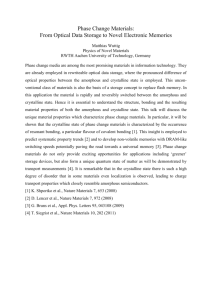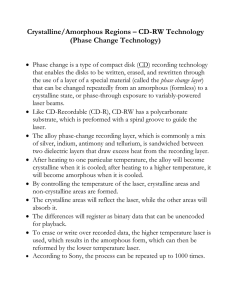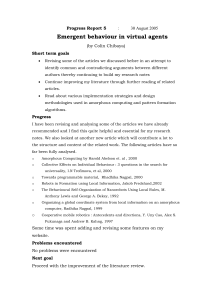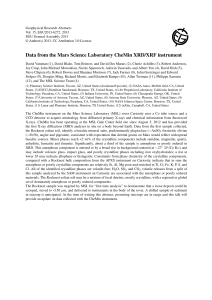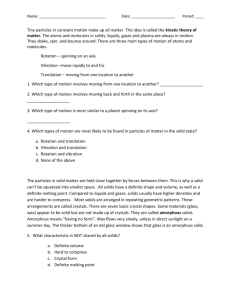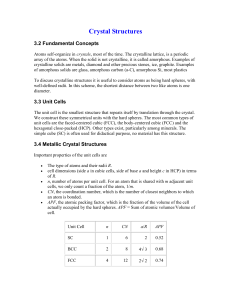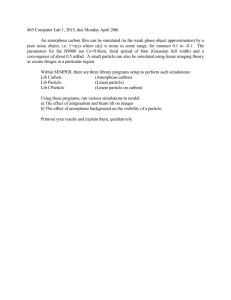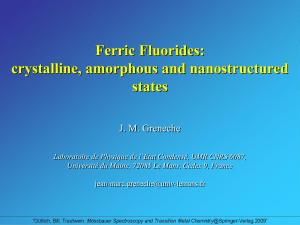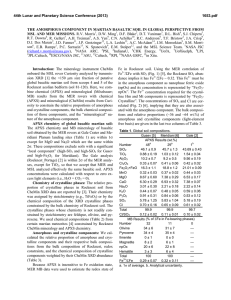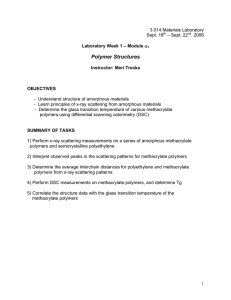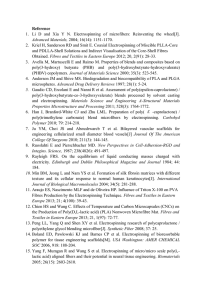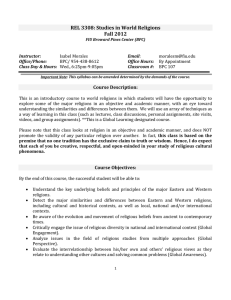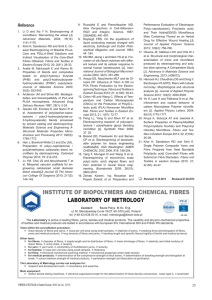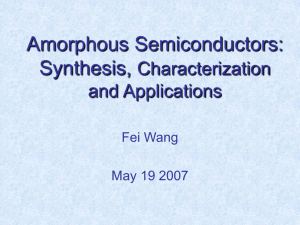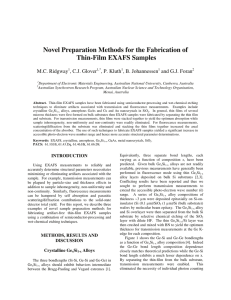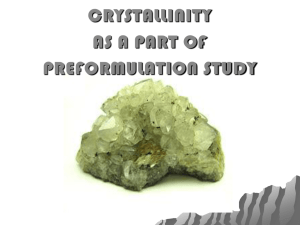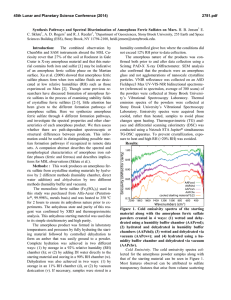Poly(L-lactide-ran- -caprolactone-ran
advertisement
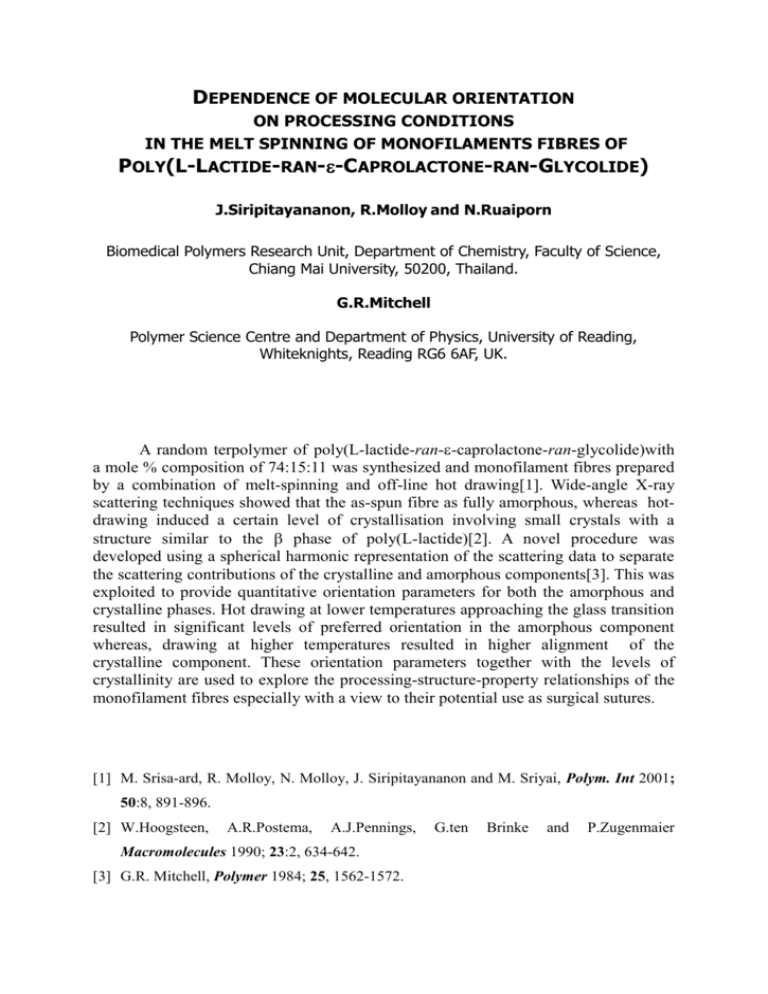
DEPENDENCE OF MOLECULAR ORIENTATION ON PROCESSING CONDITIONS IN THE MELT SPINNING OF MONOFILAMENTS FIBRES OF POLY(L-LACTIDE-RAN--CAPROLACTONE-RAN-GLYCOLIDE) J.Siripitayananon, R.Molloy and N.Ruaiporn Biomedical Polymers Research Unit, Department of Chemistry, Faculty of Science, Chiang Mai University, 50200, Thailand. G.R.Mitchell Polymer Science Centre and Department of Physics, University of Reading, Whiteknights, Reading RG6 6AF, UK. A random terpolymer of poly(L-lactide-ran--caprolactone-ran-glycolide)with a mole % composition of 74:15:11 was synthesized and monofilament fibres prepared by a combination of melt-spinning and off-line hot drawing[1]. Wide-angle X-ray scattering techniques showed that the as-spun fibre as fully amorphous, whereas hotdrawing induced a certain level of crystallisation involving small crystals with a structure similar to the phase of poly(L-lactide)[2]. A novel procedure was developed using a spherical harmonic representation of the scattering data to separate the scattering contributions of the crystalline and amorphous components[3]. This was exploited to provide quantitative orientation parameters for both the amorphous and crystalline phases. Hot drawing at lower temperatures approaching the glass transition resulted in significant levels of preferred orientation in the amorphous component whereas, drawing at higher temperatures resulted in higher alignment of the crystalline component. These orientation parameters together with the levels of crystallinity are used to explore the processing-structure-property relationships of the monofilament fibres especially with a view to their potential use as surgical sutures. [1] M. Srisa-ard, R. Molloy, N. Molloy, J. Siripitayananon and M. Sriyai, Polym. Int 2001; 50:8, 891-896. [2] W.Hoogsteen, A.R.Postema, A.J.Pennings, Macromolecules 1990; 23:2, 634-642. [3] G.R. Mitchell, Polymer 1984; 25, 1562-1572. G.ten Brinke and P.Zugenmaier
